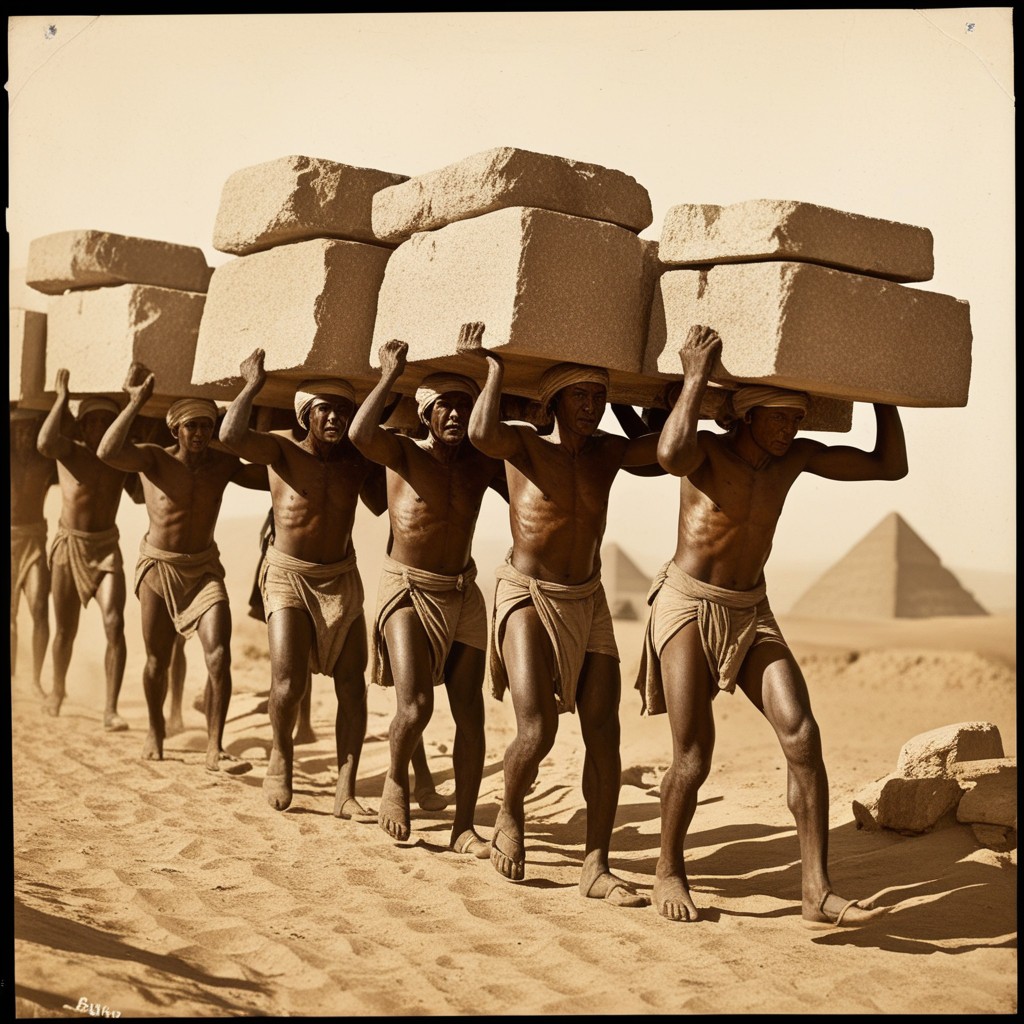
When we think of the grand monuments of the ancient world, like the Great Pyramids of Giza or the massive temples of ancient civilizations, we often marvel at their size and beauty. However, the real awe-inspiring story lies behind the scenes—hidden within the sweat and labor of thousands of workers who toiled day and night, moving colossal stones without the modern machinery we take for granted today.
The Backbone of Ancient Construction: Human Labor

The image of laborers carrying massive stone blocks gives us a rare and evocative glimpse into the realities of ancient construction. It showcases a line of men, minimally dressed, working together to support and transport these huge blocks. Their coordinated effort and the sheer number of people involved are a testament to the immense human strength and endurance that built some of history’s most iconic structures.
This scene represents more than just hard work; it speaks of an intricate system of labor organization and engineering prowess that allowed ancient civilizations to accomplish what seems impossible even by today’s standards. The sight of dozens of workers lifting and transporting multi-ton stones reveals a society deeply invested in its grand architectural projects, whether for religious, political, or cultural reasons.
Ancient Engineering: A Testament to Ingenuity
Without cranes, bulldozers, or trucks, how did ancient builders manage such feats? Historians and archaeologists have long debated the methods used. From simple but effective tools like levers, ramps, and rollers, to complex systems of pulleys and counterweights, the techniques varied by region and era. Yet one constant remains: the heavy reliance on human labor.
The effort seen in this image mirrors the ancient belief in the power of collective human strength and unity. Workers, often organized into teams, would painstakingly lift, drag, and position these stones, inch by inch, toward their final destination. This process could take years, if not decades, underscoring the sheer dedication and endurance required to complete these monumental projects.
The Human Cost of Greatness
While we celebrate the architectural wonders of the ancient world, it’s important to remember the human cost behind them. Many of these laborers were not voluntary workers; they were often enslaved people, prisoners of war, or individuals working under harsh conditions, sometimes with little to no compensation. The grueling labor, scorching heat, and dangerous tasks made this work incredibly risky, with many losing their lives in the process.
Despite this harsh reality, the skills and techniques developed during these construction projects laid the groundwork for future advancements in engineering and architecture. The laborers’ legacy lives on in the awe-inspiring structures that still stand today, centuries after they were built.
A Legacy of Strength and Endurance
The image of workers carrying stone blocks is a powerful reminder of the ingenuity and perseverance of our ancestors. Their ability to come together and achieve the seemingly impossible is a testament to human determination and innovation. These ancient builders, whose names have been lost to history, played a crucial role in creating the landmarks we revere today. Their story is one of endurance, strength, and the unyielding human spirit—a story that remains etched in stone, standing tall for all to see.
Conclusion
As we look upon the towering pyramids, ancient temples, and stone monuments, let us remember the hidden strength of those who built them. Their labor, sacrifice, and ingenuity are woven into the very fabric of history. The next time you marvel at a grand structure from the past, take a moment to reflect on the countless hands that lifted those stones, the sweat that shaped them, and the collective human effort that made it all possible.